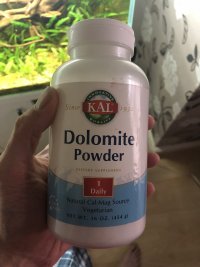MichaelJ
Member
Hello, I was playing around the rotala dosing calculator and noticed CaMg(CO3) also known as Dolomite limestone. Is anyone using this (in part) for remineralization ? I am wondering if there are any drawbacks/benefits from this particular compound?
Cheers,
Michael
Cheers,
Michael



